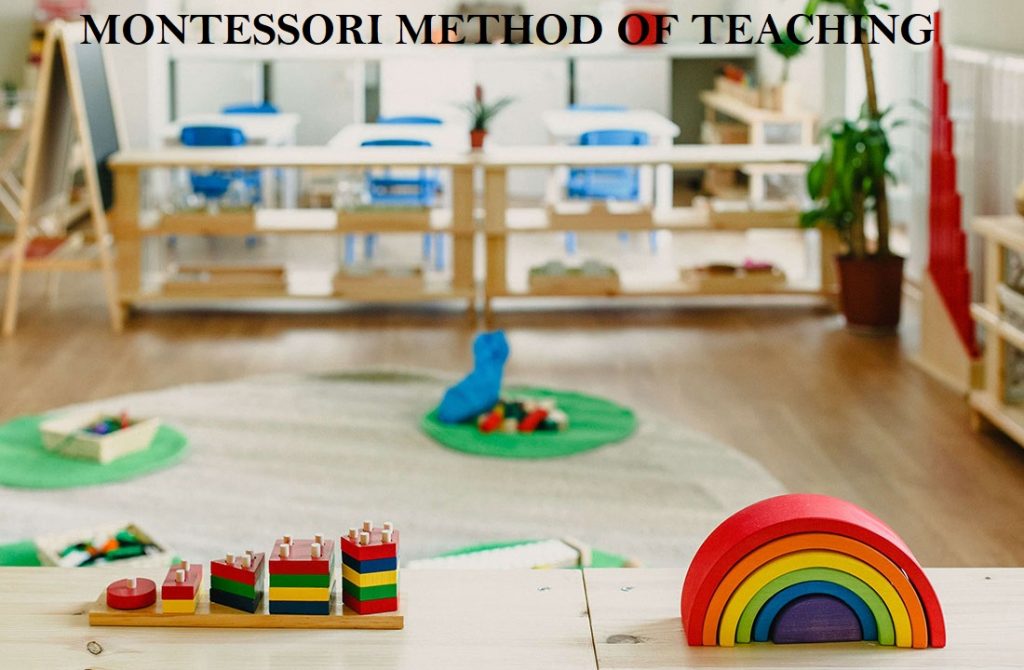
Teaching methods, as it pertains to education, are the techniques and strategies teachers use to help students succeed. Teaching methods can be classified into three categories: instructional design (teacher-led), student-centered (learner-directed), and collaborative/cooperative (group-oriented).
Learning is a process that can be assisted by various methods and techniques. The most common and best method of teaching and learning is the lectures method. Lectures are one of the many different teaching methods used to teach students about the course content. This blog post will discuss what teaching methods are, how they work, and other various types of teaching methods!
Recommended: Examlabs for Students and Tutors
What is a Teaching Method?
The teaching method is the strategy used to convey information for students to learn, it involves careful educational evaluation and assessments in ensuring the right knowledge is passed on to the pupils. Teaching methods can vary from institution to institution, but lectures are a standard method used in the classroom. The best method of teaching focuses on the best way to convey information for students of all different types. However, lectures are one of the more effective ways to do this because they allow instructors to use the best teaching method possible by covering a lot of ground for their lessons to be clearly understood!
A teaching method is a specific way in which teachers teach students. There are many different types and styles of education that teachers use when they interact with students. These methods may be used by either private or public school educators depending on their personal preference or state requirements for teacher certification. The type of education title you obtain will also depend upon your choice of educational style since there are several titles associated with each particular method. However, there are certain vital factors that you should consider before selecting your favorite technique for pedagogy, such as:
- What age group will be studying?
- What level of education does everyone have?
- Are they beginners or experts in their field already?
- How much time do I have to work with them, and how long can my attention span last when working individually/in groups?
- Do I want more information about the topic than just the basics. So, is it an educational experience, or do I need something fun and entertaining for people who don’t know anything about the subject matter at hand?
9 Types of Teaching Methods
1. Lecture Mode
Lecture learning is one of the most common methods for teaching and learning in higher institutions of seminar. This method involves a teacher standing in front of students and talking about course content they need to know or understand. Some benefits of lectures include: students can ask questions if they do not understand something, teachers have complete control over what information gets shared with students during this type of instruction, and sometimes allow time so students can take notes on important concepts taught by the instructor. However, some challenges are associated with lecture learning, including how it may be boring for students who prefer more hands-on activities and lack engagement between instructors and their learners.
The lecture method help to break the topic into different segments and present them in smaller chunks. Instructors can use PowerPoint slides, videos, or online resources to help teach students about the course content. In addition, lecture methods are best used when instructors need more time to prepare for their lessons. Lectures can also be best used when instructors need to cover a lot of material in the shortest amount of time possible!
How Do Lectures Work?
Lectures work best when instructors have a lot of material to cover in the classroom. This method is best used when there isn’t enough time for students to engage with their course content from other perspectives, such as through group projects, small group activities, or hands-on learning. Lecture methods are best taught by teachers who can keep students’ attention and clearly share information so everyone can understand what is being said.
2. Problem Solving
This method of teaching involves having students work on specific problems or challenges directly related to course content being taught in class. Some benefits include increased engagement, students learning more deeply about the material, and allowing for more hands-on activities with instructors who may be standing at a whiteboard working through solutions together with their learners. However, there are some cons associated with this form, including the time needed for preparation if not familiarized beforehand with the topic/concepts covered during instruction. It can also be challenging to monitor all learners’ progress.
How Does Problem Solving Work?
Problem-solving involves the instructor presenting a problem or challenge to the students and then breaking up into small groups to work together on finding solutions. This method of teaching best suits visual, auditory, or kinesthetic learners because it allows students to engage with the material in different ways. During this type of instruction, teachers should closely monitor student progress, so all individuals make significant contributions and stay on task. They should also be engaged throughout each lesson period.
3. Role Playing
This teaching method involves having students dress up as characters and act out different situations/scenarios related to the material being taught at hand. Some benefits include increased engagement, allowing for hands-on activities with instructors who may participate, and opportunities for student practice before applying these newly learned skills outside their classroom. However, role-playing challenges include the time needed for preparation if not familiarized beforehand with the topic/concepts covered during instruction.
How Does Role-Playing Work?
The best way that role-playing can work is by allowing the instructor to present topics or concepts covered during the lecture time frame while also incorporating small groups into acting out scenarios related to these lessons. During this type of instruction, teachers should monitor student progress closely, so all individuals make significant contributions and everyone stays on task.
4. Group Work
Group work involves having students work with their classmates cooperatively on different assignments related to the material they are being taught at hand. Some benefits include increased engagement and learning more deeply about concepts through collaboration. However, there are drawbacks associated with group work, including the time needed for students’ preparation if not familiarized beforehand with the topic/concepts.
How does group work functions best in a learning environment?
First, students must be familiarized beforehand with the concepts and content they will learn. Then instructors must give their students specific instructions on how best to complete an assignment or project so that each student can best participate and contribute to the overall group effort. Students should also be given time for individual learning before applying these newly learned skills during group work.
5. Games Method of Teaching
Another type of teaching method includes games or activities. It involves having students participate in interactive elements such as board games related to the concepts being taught. Some benefits include increased engagement, learning more deeply about the material through hands-on activities with instructors who may actively participate, and shortening lesson times.
Games can be used to reinforce material that students have already learned. For example, after a lecture has been given on the French Revolution and its causes, instructors may choose to play Jeopardy with their classes using terms like “monarchy,” “revolution,” and other concepts discussed in the lecture. It helps students review and retain information from a previous lesson while encouraging them to participate with one another.
How Does The Game Method of Teaching Work?
In this teaching approach, students are divided into groups. Each group has a different task in the game that they must complete before receiving points or “credits” to move on in their games. For example, one group might have to identify specific countries or continents on the board in a geography course while another has to list capital cities. Instructors can incorporate concepts into these games by rewarding groups who correctly answer questions with more credits than other teams.
6. Flipped Classroom
In this learning environment, activities related to course content previously completed outside of the classroom are now shifted into lecture-style instruction done inside it. Some benefits include increased engagement and student participation during lectures. It can also be seen as giving instructors who may not have been prepared beforehand with the topic/concepts covered an opportunity for the time dedicated solely towards lesson preparation. However, some challenges are associated with this form, including less instructor feedback provided than other teaching methods. Difficulties are monitoring all learners’ progress since assignments are now being completed at home.

How Does Flipped Classroom Work?
The flipped classroom method of teaching has allowed students to familiarize themselves with course materials outside of class time to participate more actively during classroom lectures. Several benefits come along with this form of learning, including increased student engagement and instructor feedback during the lesson itself. This method also provides students more opportunities for practice before applying what they have learned to other tasks outside their classroom environment. However, there are some difficulties associated with using the flipped class model as well. One major drawback is that instructors may not have enough time to prepare for their lectures because they are limited by the amount of preparation they can do before students come into class. Additionally, students may not be as closely monitored by their instructors because they now have the responsibility of completing homework assignments on their own.
7. Self-Paced Learning
In a self-paced learning environment, there is no set time when the class meets. When using this method, students take responsibility for their learning.
In these environments, instructors offer little to no guidance or feedback during instruction, allowing students to learn independently. Some benefits include increased engagement and student independence in terms of doing coursework. It can also be seen as giving self-study opportunities that previously would not have been available due to lack of instructor availability/time. However, some challenges are associated with this form, including less time spent together outside class which could lead to feelings of isolation or loneliness. Students may not always understand the concepts and may have to take time out of their day to seek help from peers. Many examples of student projects completed using self-paced learning include research papers, science fairs, presentations, art projects, etc.
How Does Self-Paced Learning Work?
Instructors create self-paced learning courses to help students complete coursework on their own time. Students work at their own pace and meet with an instructor when they need assistance understanding a concept or completing a major assignment/project.
Self-paced learning is unique in that it doesn’t rely on meetings or set times for students and instructors to meet. Students are responsible for working independently, making this method different from other methods where the instructor schedules classes. This teaching method also allows students with busy schedules more flexibility, as they can work on coursework at their own pace without having to miss class due to conflicting work/school schedules.
8. Student-Centered Learning
Finally, there is another approach called “Student-Centered Learning”. In this environment, instructors are more hands-off during lectures, allowing students to discuss topics at hand. Some benefits include increased engagement among classmates as it creates a classroom community feeling where everyone feels comfortable being themselves. However, some challenges are associated with this form. They include a lack of structure, which can also be seen as overwhelming by some learners who prefer clear guidelines on what needs completing throughout the semester. Also, students may feel as though they have not been given clear instructions on what to do, which may lead them to feelings of confusion or lack of motivation.
How Does Student-Centered Learning Work?
Some instructors may be highly involved in lecture sessions, while others give students more opportunities to work together or ask questions. The latter is generally the case when teaching introductory courses, which require less guidance than advanced topics. In this type of learning environment, students are expected to be active members in learning. The instructor needs to ensure that each student has an equal opportunity to master course content.
9. Montessori Teaching Method
This is the new cool for elementary schools. That is from pre-school to nursery and down to primary school level. It is now the most adopted method of teaching practiced amongst educationists. This method of teaching involves using creative tools that physically and mentally help kids to easily understand and memorize what is being taught. Montessori teachers are highly trained tutors who know how to impart knowledge into the kids using the Montessori teaching materials. Amongst all the teaching methods for Nursery and Primary school level, the Montessori method of teaching is the best.

A typical Montessori class room.
Having defined Teaching method, listed and explained in full, the types of teaching method, we can deduce from above the best method of teaching.
What is Best Method of Teaching?
The best method depends on various factors and circumstances. all teaching methods listed above depends on the institutional grade which in-turn has a direct relationship with the mental capacity of the students or pupils being taught. For example, for nursery and primary school level otherwise known as the elementary of foundational level, the Montessori method of teaching is the best due to the level of assimilation.
Gaming method is another practical method of teaching that best suits primary and secondary school level. The lecture mode of teaching is best suitable for a larger crowd because its conveys the lecturer’s message and students jot down. Lectures are one of the best methods of teaching for higher institution because they allow instructors to convey information quickly and efficiently. There is no better way to explain something than by doing it yourself! Having an instructor explain course content firsthand is beneficial for students who may be visual learners, auditory learners, or any other type of learner.
As said earlier, choosing the best teaching method is relative and it depends on the circumstance and environment that best suits convey seamlessly the message being passed to the students.
Various teaching methods can be used when instructing students at all levels of education, including elementary school through university or college-level courses. We can use lectures, games, activities, demonstrations, and many other teaching methods in the classroom to teach students about concepts and ideas that will hopefully remain for a long time.


